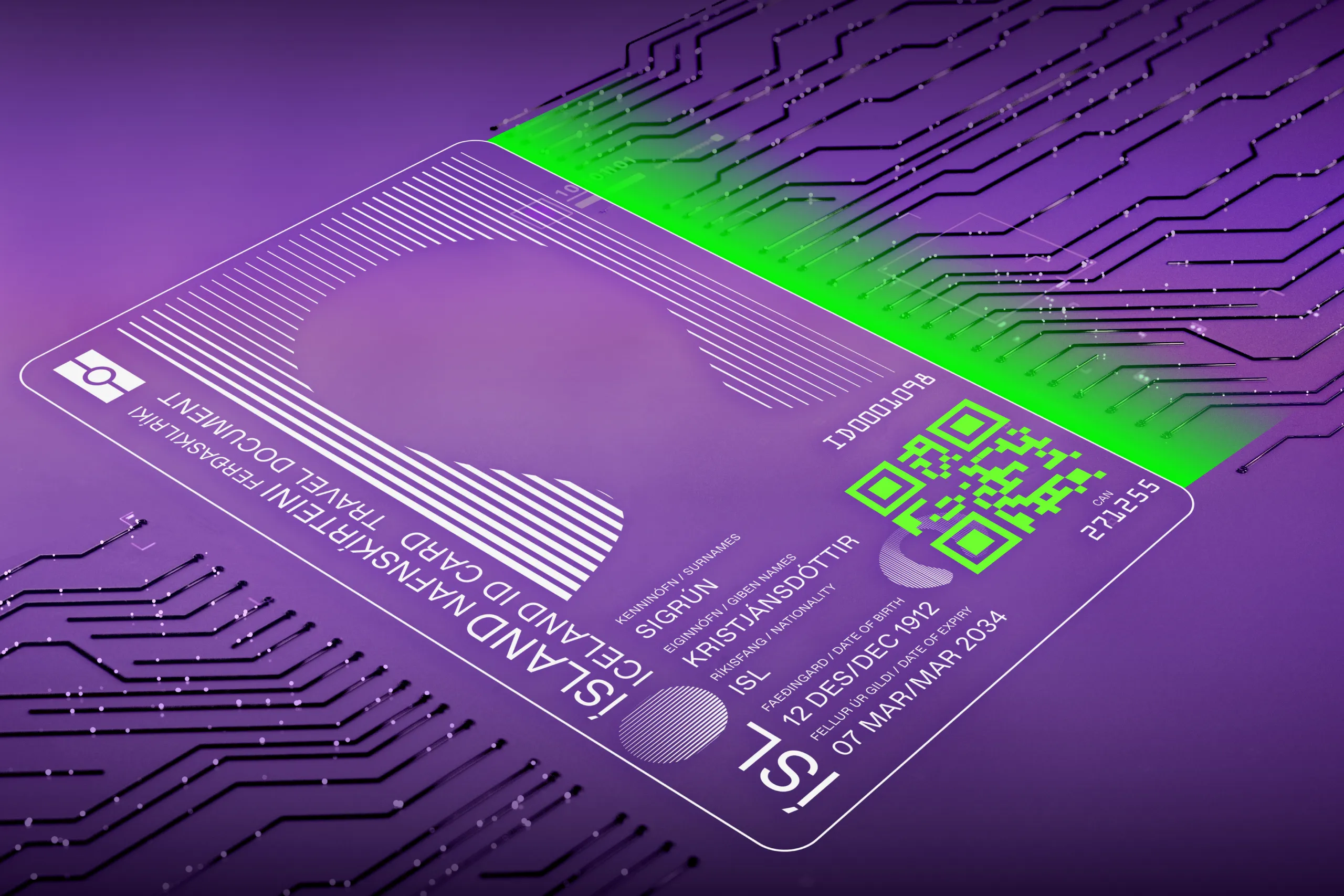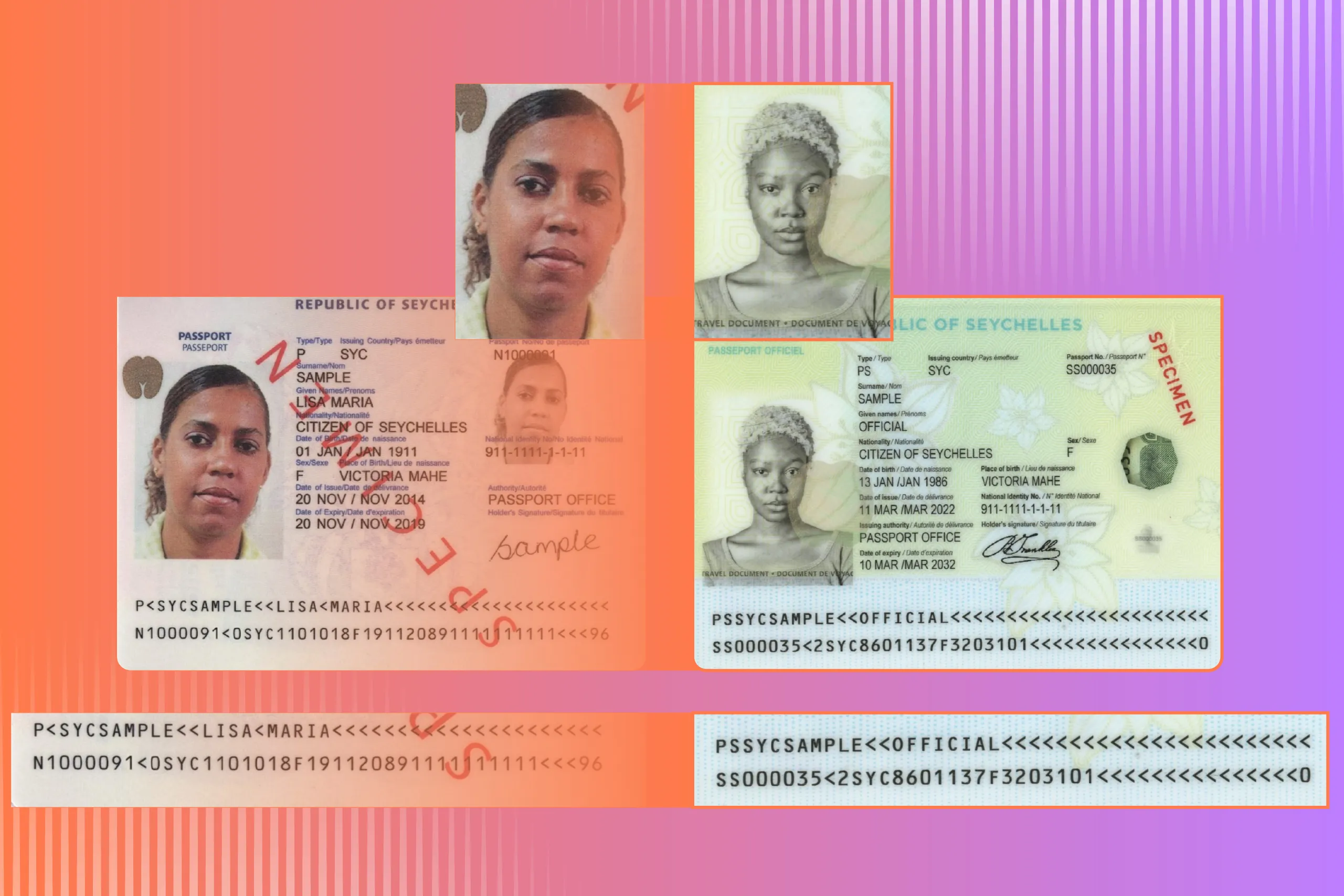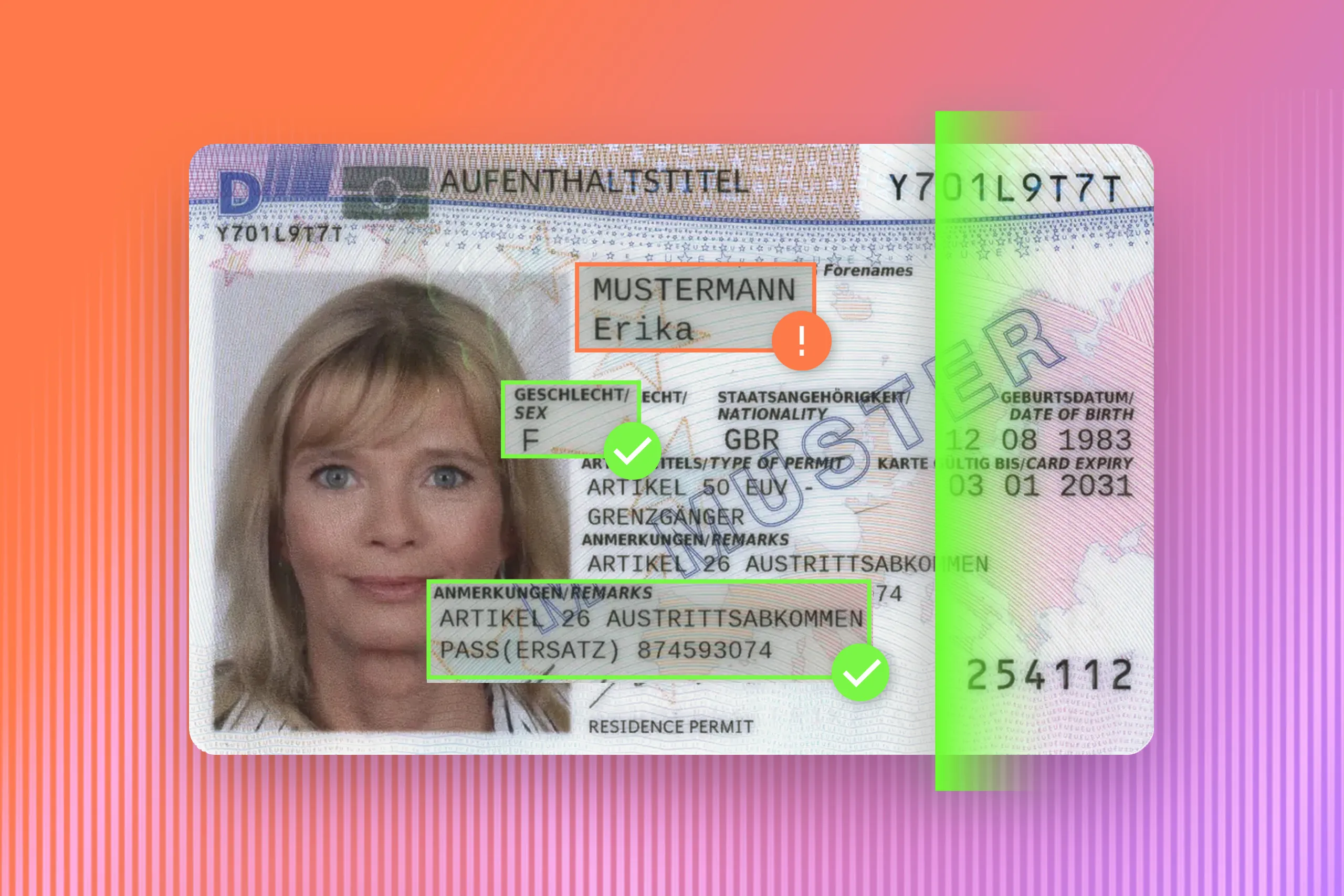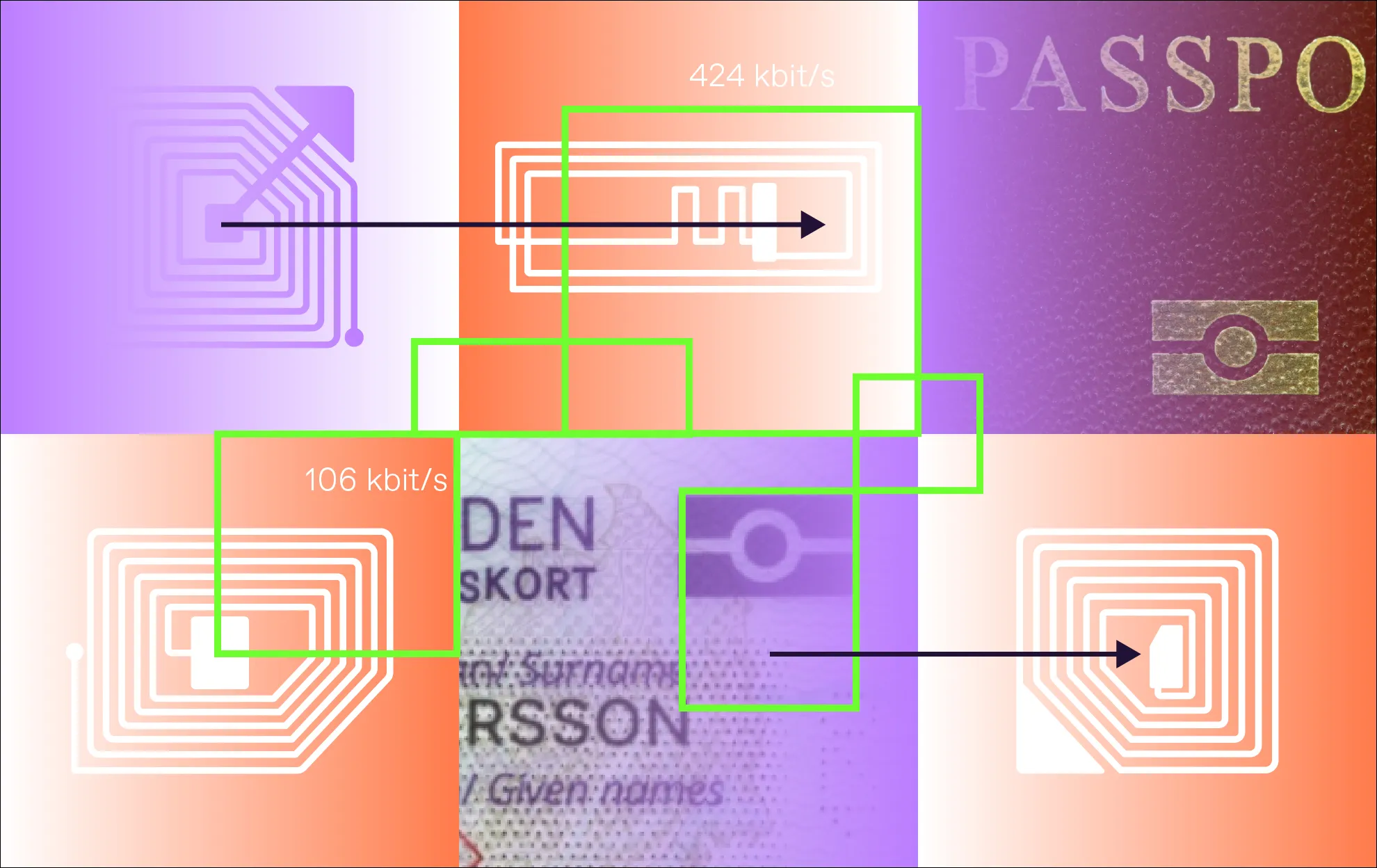Australia is home to some remarkable facts—it’s the only country that occupies an entire continent, and it’s known for its diverse (and not always friendly) wildlife that often lives surprisingly close to people.
Australian identity documents are just as distinctive. In this article, we’ll explore what makes them stand out and how to examine them more effectively.
The challenges of processing Australian IDs
On the one hand, Australia issues all its IDs in English—the standard language for OCR engines to recognize and read. On the other hand, there is no national Australian identity card. In most cases, driver’s licenses serve as the primary form of domestic identification.
What makes it more complex is Australia’s size—it’s the world’s sixth-largest country, covering the mainland, Tasmania, and numerous smaller islands. It’s divided into six states and two self-governing territories, plus several external territories. Each has its own issuing authorities.
That brings us to the biggest challenge in verifying Australian IDs: there’s no single format or standard.
Let’s zoom in.
The passport as the only common biometric document
Since Australia has no land borders, every international trip is by air or sea and requires a valid passport. That’s why the Australian passport is used strictly for travel and is issued with strong security measures.
By the way, the country is a good example of a state actively involved in developing and adopting international standards and specifications for travel documents, as a member of ICAO’s Technical Advisory Group. Also, it was among the first—alongside the US and Canada—to issue machine-readable passports in 1980.

Updated in 2022, the Australian passport is one of the most secure travel documents in the world.
Australia has issued only biometric passports since 2005, with new features added in each series. The current version, released in 2022, is fully ICAO-compliant. It includes a polycarbonate datapage, a transparent window, three ghost portraits, and several holograms. It also has an embedded chip that stores the holder’s photo and visual data. When paired with NFC verification, this makes the passport hard to forge and easy to authenticate remotely.

One of the passport's holograms appears next to the photo. It can help check document liveness—but if scanned incorrectly, it may interfere with nearby data.
The passport contains the standard dataset. One exception is the Sex field. In addition to Male and Female, it may also display X—a marker used by holders who choose not to specify their gender.
Interestingly, according to ICAO standards, the machine-readable zone (MRZ) includes a placeholder—'<' instead of 'F' or 'M'—as a gender indicator in such cases. Modern IDV solutions, including Regula Document Reader SDK, are trained to work in line with newer requirements and can handle passports like these without errors.

The 'X' in the sex field indicates an unspecified gender, and the MRZ code includes a placeholder in accordance with ICAO Doc 9303.
Not only passports are strictly biometric in Australia. There are other biometric travel documents—for example, those issued to non-citizens living in the country. These include the UN convention travel document and the certificate of identity, usually granted to refugees or stateless persons.
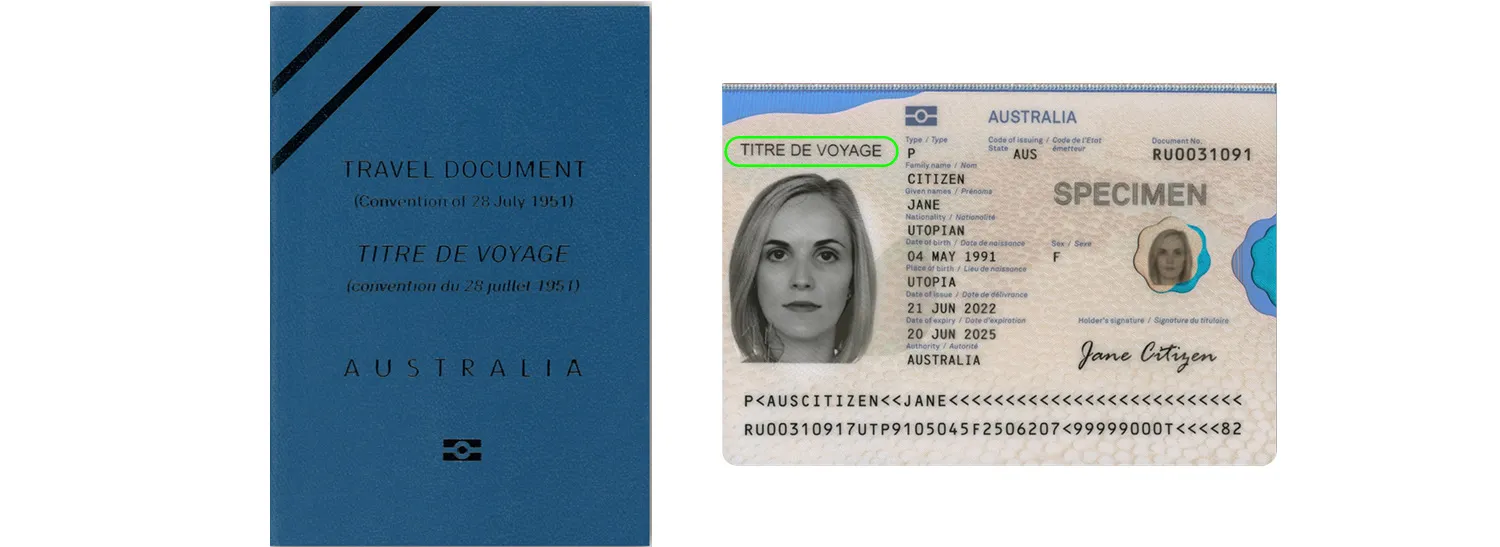
The convention travel document is passport-like and biometric. However, it’s valid for a shorter period—up to three years.
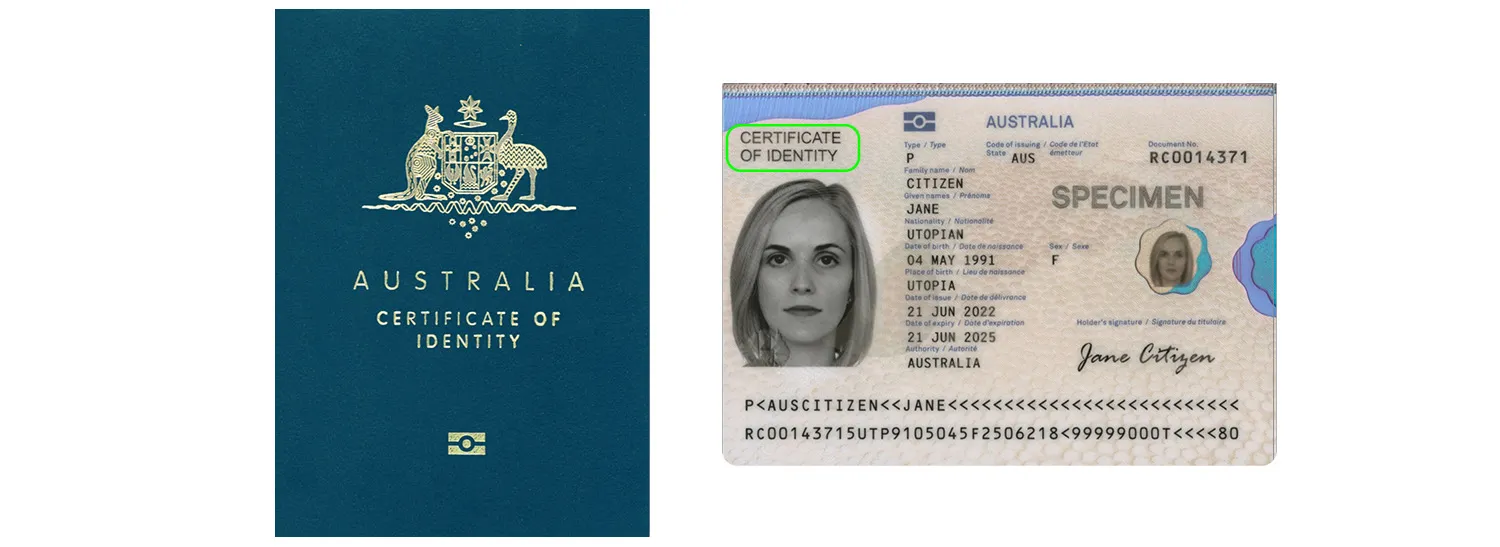
The certificate of identity is for individuals leaving Australia who are stateless or unable to get a travel document from their home country. It usually has a shorter validity period than regular passports.
A variety of non-electronic driver’s licenses
As mentioned above, Australia is made up of several states and territories, each with a certain level of autonomy. Many issue their own photo IDs for residents, but the most common form of identification nationwide is the driver’s license.
Despite differences in appearance, Australian driver’s licenses share some key characteristics. They are made of polycarbonate, include a photo, and follow a uniform class system. For example, C is for car drivers, R for riders, and HR for heavy vehicle operators. The license class (or classes) is specified on all documents.


Driver’s licenses from different territories still list the license class as a required field.
Also, most states and territories issue licenses based on driving status: learner, provisional, or full. These versions often differ in color.

In South Australia, learners receive yellow-marked licenses, provisional drivers get red, and fully licensed drivers are issued blue.
Licenses for driving offenders
A unique case exists in Queensland: work licenses. These are issued to individuals charged with an alcohol- or drug-related driving offense, allowing them to drive only for work-related purposes. The document valid at the time of the offense is often called a "day license."
The dataset on a license can vary by region. Typically, it includes the holder’s name, date of birth, address, signature, and license-specific information such as number, issuance and expiration dates. Some states also list donor status or physical attributes like height.

Most Australian licenses have the photo on the right—like this one from Western Australia.

Queensland licenses include the holder’s height and a ghost image beside the main photo.

In New South Wales, donor status appears on the license.
There is also a Condition field where codes for special driving restrictions are specified: for instance, A—only vehicles with automatic transmission, S—must wear corrective lenses while driving, etc.

Condition codes are standardized across all states, as seen in this example from Victoria.
Australian driver’s licenses lack dynamic security features, electronic chips, or barcodes. This makes remote authentication more difficult. OCR engines must be carefully trained to recognize various layouts and fonts. Some licenses also use intricate backgrounds or bright elements that interfere with mobile scanning.
Additionally, some documents—such as driver’s licenses from Victoria and Tasmania—feature transparent stripes in the middle of the front side that display important data printed in dark font, namely the holder’s date of birth. When these documents are scanned while lying on a dark surface, the data is difficult to recognize. That’s why user-friendly hints are essential during in-app driver’s license verification.

The wavy background and transparent stripe on Tasmanian licenses can obscure data, requiring precise scanning tools.
Mobile driver’s licenses (mDLs) in Australia
Australia was among the early adopters of voluntary digital driver’s licenses, which holders can store on their smartphones. Currently, South Australia, New South Wales, Queensland, and Victoria issue mDLs to drivers.
Typically, the digital service is available for all types of licenses, including learner’s permits. To use it, users need to download an app (separate for each state that supports mDLs) and register by entering details from their physical card—name, address, card number, etc. Once the mDL is successfully added, the user can present a unique QR code for scanning during checks.
In many cases, mDLs can be used not only as proof of the right to drive but also as proof of age or identity in other contexts.
Access to mDLs is protected by biometrics—fingerprints, facial recognition, PINs, and other security measures available in the app.
Importantly, Australian issuance and verification of mDLs have been based on internal standards from the beginning, as the country—specifically, South Australia—launched them back in 2017. In 2024, Australia began shifting toward ISO-compliant digital licenses, aiming to harmonize mobile driver’s license standards and verification with international best practices, such as ISO/IEC 18013-5.
Standalone licenses for water transport
Since none of Australia’s states or territories are landlocked, residents can operate watercraft in addition to cars or motorcycles. Some regions, including Queensland, Victoria, and New South Wales, issue dedicated identity documents for recreational boating.
These documents have distinct designs and typically grant permission to operate personal, non-commercial vessels used for leisure. Like driver’s licenses, they are issued in learner, provisional, and open categories, which determine when and how the holder is allowed to operate a boat.
In some states, like Queensland, a marine license can be valid for life. Interestingly, marine license information may also appear on the reverse side of a regular driver’s license. For those without a driver's license, a separate marine license indicator card is available.

Queensland’s marine license indicator card and Victoria’s marine license have a distinct design
Photo cards for minors and adults
Although there is no nationwide Australian identity card, each state and territory offers alternatives. These are known by various names—photo identity cards, proof of age cards, evidence of age cards, proof of identity cards, and more.
These voluntary documents are usually issued to non-drivers, often by the same authorities that handle driver licensing, like the Roads and Maritime Services. Because of this, photo ID cards can resemble driver’s licenses in design and format.
They’re made of plastic and come in various styles. Most include a photo, date of birth, and signature. The minimum age to apply is generally 15 (such as in Queensland), but in Tasmania, there is no age limit at all.

In Queensland, two versions exist: red for minors and green for adults.
Photo ID cards are often accepted as proof of age when buying restricted products like alcohol. For example, the Australian Capital Territory issues a proof of identity card to residents aged 18 and older.

The ACT’s proof of identity card includes the holder’s address.
Expiration terms also vary by region. Some cards are valid for 5 to 10 years, while others have no expiration date.


New South Wales photo cards are valid for 5-10 years. In South Australia, they don’t expire.
Like for driver’s licenses, remote verification of Australian photo ID cards requires a large and varied sample database. Their diverse designs—and in some cases, decorative or dynamic elements—can make accurate scanning more difficult.

Tasmania’s intricate backgrounds and Victoria’s dynamic design elements can interfere with mobile scanning and data recognition.
Most photo ID cards lack machine-readable zones (MRZs), chips, or barcodes. So, verification often depends on precise image capture and OCR accuracy.

A barcode on the reverse of Western Australia’s photo card is a rare exception. Most photo ID cards don’t include any machine-readable elements.
Healthcare cards in different designs
Australia issues standalone identity documents for accessing healthcare services—known as Medicare cards. These cards represent the country’s universal healthcare system, which covers some or all costs for various medical services in both public and private hospitals.
A Medicare card typically displays the holder’s name, but it can also include details of other family members—especially children—if the holder chooses to add them. When someone claims healthcare, the system matches the database records with the card details. Along with names, each card contains a unique number and an expiration date.

Medicare cards come in different colors: green for standard cards, blue for interim, and yellow for Reciprocal Health Care Agreement cards.
Since these cards lack dynamic security features or machine-readable zones, IDV software must rely on accurate OCR. To recognize and extract the correct data, it first needs a relevant template.
Australia’s healthcare card pool is quite broad. There are also special versions for veterans, retirees, foster carers, and others. (And by the way—if you need to scan one of them, a template can be added to the Regula Document Reader SDK database upon request.)
Digital healthcare cards
Many Australians use myGov—the official government portal—for online access to public services. The myGov app includes a digital wallet where users can store government-issued digital cards and certificates, including healthcare cards.
How to effectively process Australian documents
Australia issues a wide variety of identity documents—but with the right tools, they can all be accurately verified remotely. To do that, your IDV solution should include:
A comprehensive database of Australian IDs: As a large country with self-governing states and territories, Australia uses a broad range of domestic IDs, each with unique designs and data layouts. To handle this, your system needs a full template database—including specimens from every region. Regula’s library, for example, includes over 16,000 templates from 254 countries and territories, covering Australian passports and domestic documents—even rare ones from Christmas Island and the Cocos (Keeling) Islands.
NFC verification module: All Australian travel documents are biometric. Since they’re used by citizens traveling abroad, you need to verify not just the visual and machine-readable data, but also the chip content. NFC enables Australian passport verification, even via a mobile device.
MRZ and barcode reading: While travel documents include mandatory MRZs, some domestic IDs feature barcodes. Your solution must be able to detect, read, and match this data with the visual information on the document.
ID liveness detection: Australian passports and some travel documents include dynamic security features like holograms. Liveness detection helps confirm that you're dealing with a physical document—not a spoof, photo, or AI-generated image.
Advanced ID capture: Australian domestic IDs often feature vibrant designs, where background patterns may overlap with photos or text. To scan these accurately on the first try, you need smart capture technology. Regula’s Document Reader SDK uses advanced algorithms to extract text even from low-quality or visually complex scans.
Have questions about Australian ID verification? Let’s talk—book a free call today!


